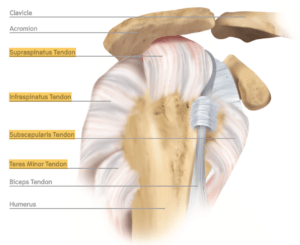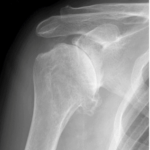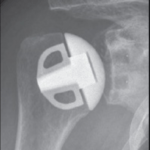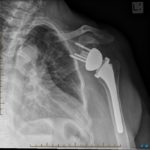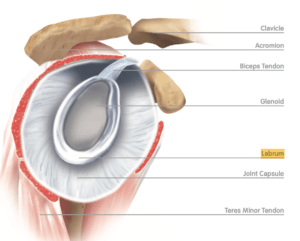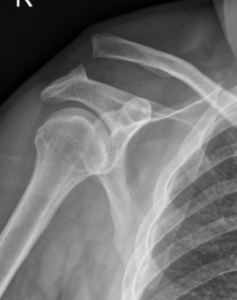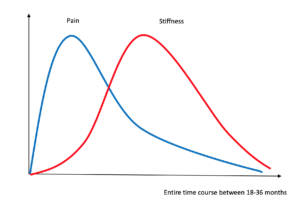Shoulder
Comprehensive information about conditions and treatments available for the shoulder.
Shoulder Conditions & Treatments
Rotator Cuff Tears
There are 4 muscles at the top of the shoulder that move the shoulder. These are known as the rotator cuff, and they insert at the top of the humerus.
If you have a tear in one or more of the tendons of these muscles, you might feel:
- Pain – especially at rest or at night, or when trying to move the arm
- Weakness of the arm
- ‘Crackling’ when you move the arm in certain positions
Your symptoms might start off gradually at first, and be easily controlled by a steroid injection, pain tablets, and physiotherapy.
If you still have pain despite trying these, or if you have an acute injury causing a tear, then you may be a candidate for a rotator cuff repair.
Dr Yeoh performs keyhole (arthroscopic) rotator cuff repairs.
Please click HERE to learn more about rotator cuff tears and their treatment.
Arthritis Surgery
Arthritis occurs when the smooth cartilage outer layer of the bone wears out and bone grinds against bone.
Typical symptoms include:
- Pain – either at rest or made worse with movement. This can be particularly bad with changes in weather
- A ‘crunching’ sensation when moving the arm
- Restricted range of motion of the shoulder
Early arthritis can be treated with rest, activity modification, steroid injections or pain tablets. Sometimes ice or heat packs may help too. If your symptoms are not controlled by these simple measures, then you may be a candidate for surgery.
The most effective surgery for shoulder arthritis is a shoulder replacement, where Dr Yeoh will replace the worn out part of the shoulder with an implant.
Shoulder replacements are very effective in restoring function and taking away pain due to arthritis. There are 2 types:
- Anatomic Shoulder Replacement
This is where the ball of the shoulder is replaced by a prosthetic ball, and the socket of the shoulder is replaced by a prosthetic socket.
- Reverse Shoulder Replacement
This is where the ball of the solder is replaced with a socket, and the socket of the shoulder is replaced with a ball. This is the best type of implant for someone that has arthritis due to rotator cuff tears (called cuff tear arthropathy)
Click HERE if you would like to read more about Shoulder Arthritis.
Computer Navigated Shoulder Replacement
Dr Yeoh performs a computer navigated shoulder replacement which allows him to utilise the latest technology to increase accuracy of component positioning. This is achieved by either live GPS trackers during surgery, or by creating a 3D mould of your shoulder before the operation to make custom guide that he uses to help position in the implant (patient specific instrumentation).
A video explaining computer navigated surgery can be found by clicking HERE.
Revision Shoulder Replacement Surgery
If you already have a shoulder replacement that for some reason is not functioning properly or failing, you might be a candidate for a revision shoulder replacement. This is complex surgery, and Dr Yeoh can plan this with you. Custom implants may even be used to solve difficult problems.
Shoulder Dislocation/Instability (Labral Tears)
Following trauma to the shoulder, the ball of the shoulder can either either partially pop out (called ‘subluxation’) or completely pop out (called ‘dislocation’) of the socket. As the shoulder is such a mobile joint, it could dislocate in any direction, but the most common direction is out the front.
The socket of the shoulder is relatively flat, and in order to create more stability, there is a cartilage ring around the outside called the labrum. This is commonly torn in shoulder instability. These tears are called ‘Bankart’ lesions, and if they also involve the bone, they are known as ‘Bony Bankart’ lesions.
In many cases, physiotherapy can strengthen the shoulder and prevent recurrent problems, but there are certain people for which surgery is the correct option.
These might include, but are not limited to:
- Young age at the time of first injury
- Recurrent shoulder instability or pain
- People for whom the risk another dislocation is significant and if this were to happen the consequences would be problematic (eg, athletes or defence personnel)
If the labrum is torn, this could be fixed utilising arthroscopic (keyhole) or open surgery. Dr Yeoh will talk to you about these options and recommend the most appropriate technique tailored for you.
Click HERE to read more about labral tears.
An example of an arthroscopic labral repair can be see HERE
Sometimes, not only is the labrum torn, but there might be a fracture of the socket causing significant instability. This should be fixed in an acute setting, or will need a bone transfer (Latarjet) procedure in the chronic setting. A video demonstrating this can be viewed by clicking HERE.
Fractures around the Shoulder
Accidents can occur and there are many bones around the shoulder that can be broken. If you have broken your shoulder, it is important to seek medical advice as soon as possible. Some fractures will heal without trouble in a sling, but others will need an operation to fix or replace it, depending on your individual circumstance.
Dr Yeoh regularly treats all shoulder fractures including fractures of the:
Click HERE for further information on this condition and treatment.
AC Joint Dislocation
Sometimes when there is direct trauma to the point of the shoulder, the end of the collar bone (clavicle) can appear like it has popped up. This is called an AC joint dislocation.
There are many different types and grades of AC joint dislocations, and some of them require surgery in order to achieve the best possible outcome.
If surgery is indicated, Dr Yeoh performs an arthroscopic assisted technique to cinch the clavicle back down to where it is supposed to be
Click HERE to watch an animation of an AC joint reconstruction .
Frozen Shoulder
Frozen shoulder is an extremely painful and can significantly impact your ability to sleep and do any activities of daily living with your arm. In the majority of cases, no cause is found, but it can also rarely occur after injury or surgery to the shoulder.
It typically affects women more than men, who are in their 40s and 50s. People with diabetes are also more at risk of developing frozen shoulder.
Frozen shoulder presents with 3 very distinct stage:
- Freezing stage – increasing pain, range of motion is starting to decrease
- Frozen stage – decreasing pain, range of motion very restricted
- Thawing stage – decreasing pain, range of motion improving.
The good news is that frozen shoulder almost always gets better by itself. The bad news is that it can last up to 1.5-3 years.
Nonsurgical measures such as pain tablets, injections into the joint and simple stretches can help. Only very few people have such bad frozen shoulder that they require keyhole surgery to release the inflamed capsule.
Click HERE for more information regarding this condition.
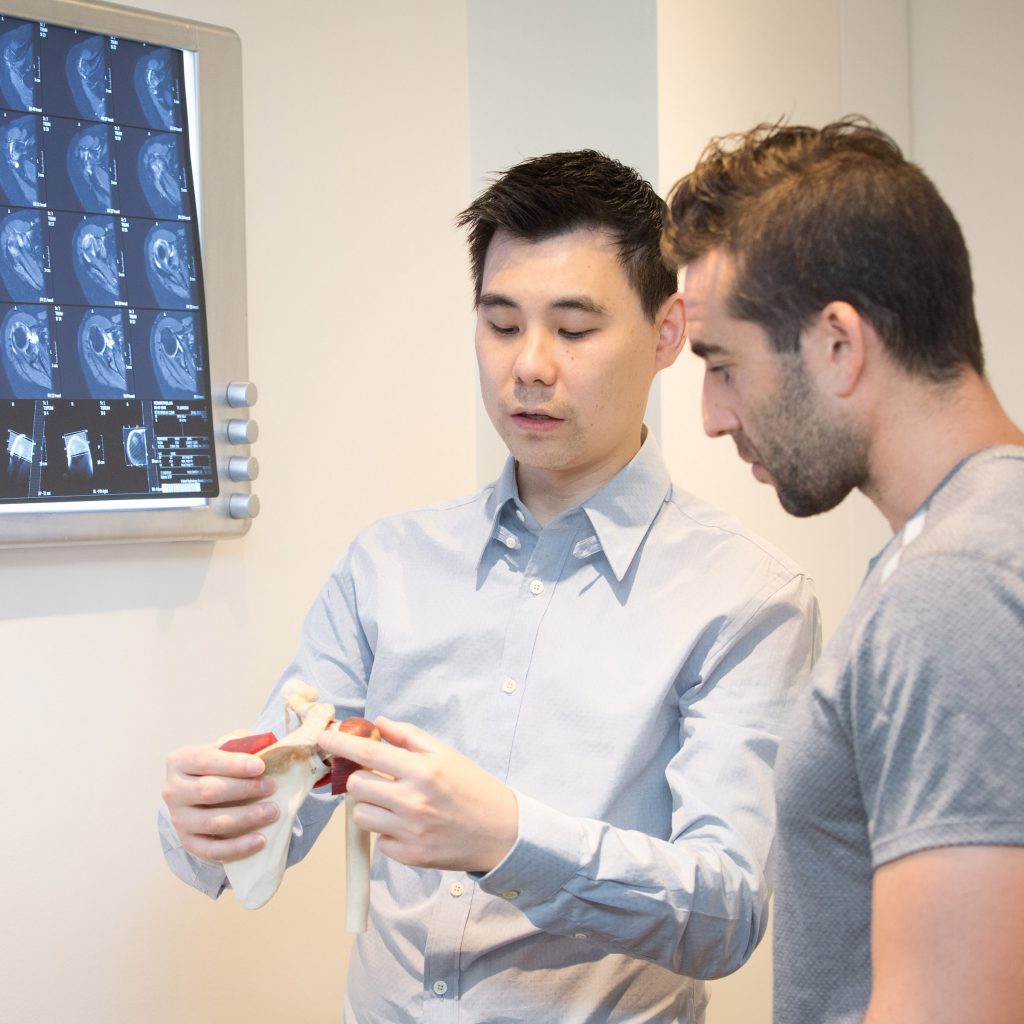
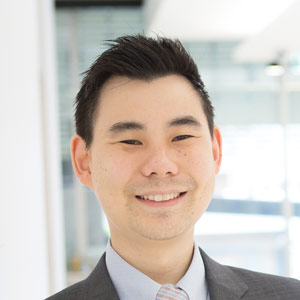
Shoulder Procedures - Multimedia
Contact us
Dr Yeoh and his team are here to support you and answer any questions you may have along the way.

